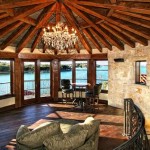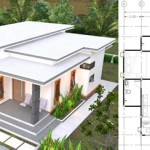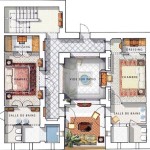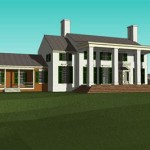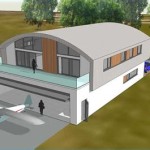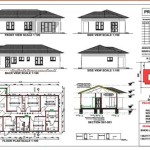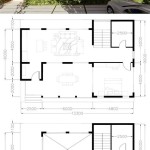Plantation Style House Plans: A Southern Living Legacy
Plantation style house plans, particularly those featured in Southern Living, evoke a sense of history, grandeur, and timeless elegance. These designs, often inspired by antebellum architecture, offer a unique aesthetic appeal while incorporating modern amenities and livability. This article explores the key characteristics of plantation style house plans, delves into design elements commonly found in Southern Living adaptations, and examines the considerations involved in building or adapting such a home.
Defining Plantation Style Architecture
Plantation style architecture, at its core, is characterized by a symmetrical facade, large front porches supported by substantial columns, and a generally rectangular footprint. The style originated in the Southern United States and was a response to both the climate and the land ownership patterns of the time. These homes were designed to be impressive, reflecting the wealth and status of their owners, while also providing practical living spaces suitable for the warm, humid climate. Key features include:
*
Symmetrical Facade:
The front of the house is typically balanced, with equal numbers of windows and doors on either side of the central entrance.*
Grand Porches:
Expansive porches, often wrapping around the house, provide outdoor living space and shade from the sun.*
Columns:
Large, stately columns are a defining feature, often Doric, Ionic, or Corinthian in style.*
High Ceilings:
Tall ceilings are common, promoting air circulation and cooling the interior.*
Large Windows:
Numerous windows, often double-hung, allow for ample natural light and ventilation.*
Formal Landscaping:
Well-maintained gardens and landscaping typically complement the architectural style.Southern Living's Modern Interpretation of Plantation Style
Southern Living has played a significant role in popularizing and modernizing plantation style house plans. Their adaptations often retain the core architectural elements while incorporating contemporary design trends and functionality. Southern Living designs typically prioritize livability, energy efficiency, and indoor-outdoor connections. These modern interpretations may include:
*
Open Floor Plans:
While traditional plantation homes often featured distinct rooms, Southern Living adaptations may incorporate open floor plans, particularly in the living and dining areas, facilitating modern lifestyles.*
Gourmet Kitchens:
The kitchen is often a focal point, designed with high-end appliances, custom cabinetry, and ample counter space.*
Luxurious Master Suites:
The master suite is typically spacious and well-appointed, with features such as walk-in closets, spa-like bathrooms, and private sitting areas.*
Outdoor Living Spaces:
Southern Living designs often emphasize outdoor living, with features such as screened porches, outdoor kitchens, and swimming pools.*
Updated Materials:
Modern building materials are often used, such as energy-efficient windows, durable siding, and sustainable flooring options. The use of modern insulation and HVAC technologies are also incorporated to increase energy efficiency.*
Smaller Footprints:
Recognizing that larger homes aren't always necessary or desirable, Southern Living publishes plantation-style plans that are more modestly sized without sacrificing elegance or functionality.Southern Living's approach understands that while the architectural style is steeped in history, modern homeowners have different priorities and lifestyles. This leads to a blend of traditional aesthetics with contemporary practicality.
Key Elements in Southern Living Plantation Style House Plans
Several recurring elements are frequently observed in Southern Living's plantation style house plans, contributing to their distinctive character and appeal. Understanding these elements is crucial for appreciating the nuances of this particular design genre:
*
The Emphasis on Porches:
The porch is not merely an architectural detail; it is an integral living space. Southern Living plans often feature multiple porches, each serving a specific purpose. A large front porch creates a welcoming entrance, while smaller, more private porches offer secluded retreats. The specific orientation of the porch is considered to maximize shade during hot summer months and provide views of the surrounding landscape.*
Strategic Window Placement:
Windows are carefully positioned to maximize natural light and ventilation. Large windows are often used in living areas, while smaller windows may be used in bedrooms for privacy. The type of window, such as double-hung or casement, is also considered for both aesthetic and functional purposes. Transom windows above doors and larger windows are often incorporated to enhance light penetration.*
Attention to Detail:
Southern Living plans typically feature intricate details, such as crown molding, wainscoting, and custom trim work. These details add visual interest and contribute to the overall sense of elegance and sophistication. The choice of hardware, light fixtures, and other decorative elements is also carefully considered to complement the architectural style.*
Functional Layout:
While plantation homes are known for their grandeur, Southern Living plans also prioritize functionality. The layout is designed to maximize space and efficiency, with rooms flowing seamlessly from one to another. Attention is given to traffic patterns and circulation, ensuring that the home is easy to navigate and live in.*
Consideration of the Landscape:
Southern Living understands the importance of integrating the home with its surrounding landscape. The plans often include features such as gardens, patios, and walkways that connect the home to the outdoors. The choice of landscaping materials and plants is also carefully considered to complement the architectural style and create a harmonious overall effect.*
The Use of Natural Light:
Optimizing the entry of natural light is paramount. Large windows, strategically placed skylights, and light wells are often used to illuminate interior spaces and reduce the reliance on artificial lighting. The orientation of the house on the lot is carefully planned to maximize exposure to sunlight throughout the day.Considerations When Building or Adapting a Plantation Style Home
Building or adapting a plantation style home requires careful planning and consideration. Several factors must be taken into account to ensure that the project is successful and that the finished product meets the homeowner's needs and expectations:
*
Budget:
Plantation style homes can be expensive to build or renovate due to the large size, high-end materials, and intricate details. It is crucial to establish a realistic budget at the outset and to track expenses carefully throughout the project. Contingency funds should be built into the budget to account for unexpected costs.*
Location:
The location of the home is also an important consideration. Plantation style homes typically require a large lot to accommodate the expansive footprint and landscaping. The climate should also be considered, as the architectural style is best suited for warm, humid regions. Local zoning regulations and architectural guidelines must also be adhered to.*
Architectural Style:
It is important to choose an architectural style that is appropriate for the location and the homeowner's preferences. While plantation style homes are generally characterized by a symmetrical facade and large porches, there are variations within the style. Researching different plantation style examples and working with an experienced architect can help determine the best approach.*
Materials:
The choice of materials is also crucial. High-quality materials, such as brick, wood, and stone, will enhance the appearance and durability of the home. Energy-efficient materials, such as insulated windows and doors, will help to reduce energy consumption and lower utility bills. Sustainable materials, such as recycled wood and bamboo flooring, can also be used to minimize the environmental impact.*
Interior Design:
The interior design should complement the architectural style of the home. Traditional plantation style homes often feature formal living spaces, rich wood tones, and elegant furnishings. Modern adaptations may incorporate more contemporary design elements, such as open floor plans, minimalist furnishings, and bright colors. Working with an experienced interior designer can help create a cohesive and stylish interior.*
Sustainability:
As sustainability becomes increasingly important, consider incorporating eco-friendly features into the home. This might include solar panels, rainwater harvesting systems, and energy-efficient appliances. Using locally sourced materials can also reduce the environmental impact of the construction project.*
Historical Context:
When adapting an existing plantation home, it is important to respect the historical context of the building. Original architectural features should be preserved whenever possible, and new additions should be designed to blend seamlessly with the existing structure. Working with a historical preservation expert can help ensure that the adaptation is done in a sensitive and respectful manner.*
Professional Expertise:
Engaging qualified professionals—architects, builders, interior designers, and landscape architects—is essential. Their expertise will ensure that the project is executed correctly, on time, and within budget. Due diligence is key when selecting professionals—check references, review portfolios, and ensure they have experience with this specific style of architecture.Building or adapting a plantation style home is a complex undertaking that requires careful planning and execution. By considering these factors, homeowners can create a beautiful and functional home that reflects their personal style and values.

Southern Home Plans Plantation Style Wrap Around Porch

1800s Southern Style Up With The Times

Lowcountry Farmhouse House Plans Cottage Southern
:max_bytes(150000):strip_icc()/southern-living-house-plans-porch-18324aaa8f98476dbfab68520914c229.jpeg?strip=all)
These Southern Living House Plans Have Dreamy Porches

5 Bedrm 7433 Sq Ft Southern Plantation House Plan 153 1187

This Is The House We Want To Build Love It Southern Living Plans Lake Country
:max_bytes(150000):strip_icc()/aiken-street_1_1_1-3932223768bd4a798f629ef7e5864327.jpg?strip=all)
20 Perfect House Plans For First Time Homeowners
Top 12 Best Ing House Plans

Southern Living Dreamy House Plans With Front Porches Blog Dreamhomesource Com

Abberley Lane Southern Living House Plans Stone

